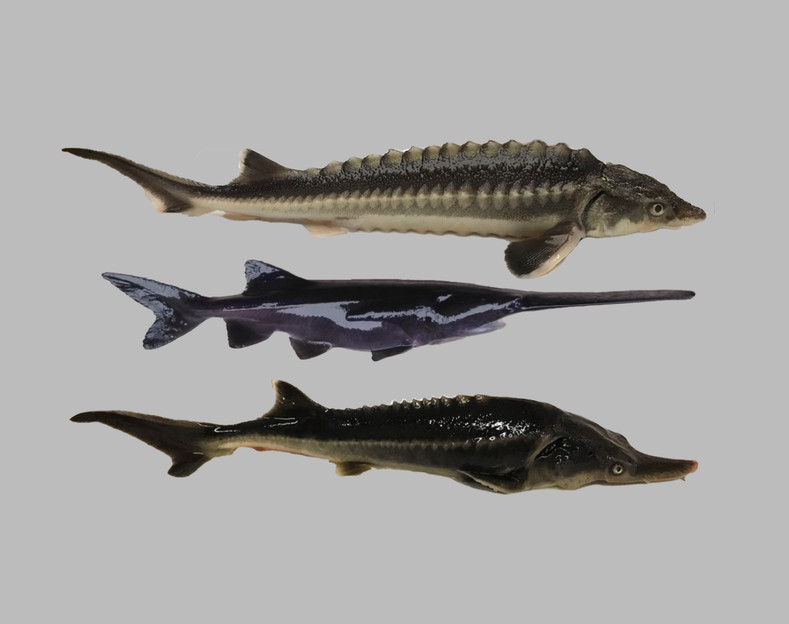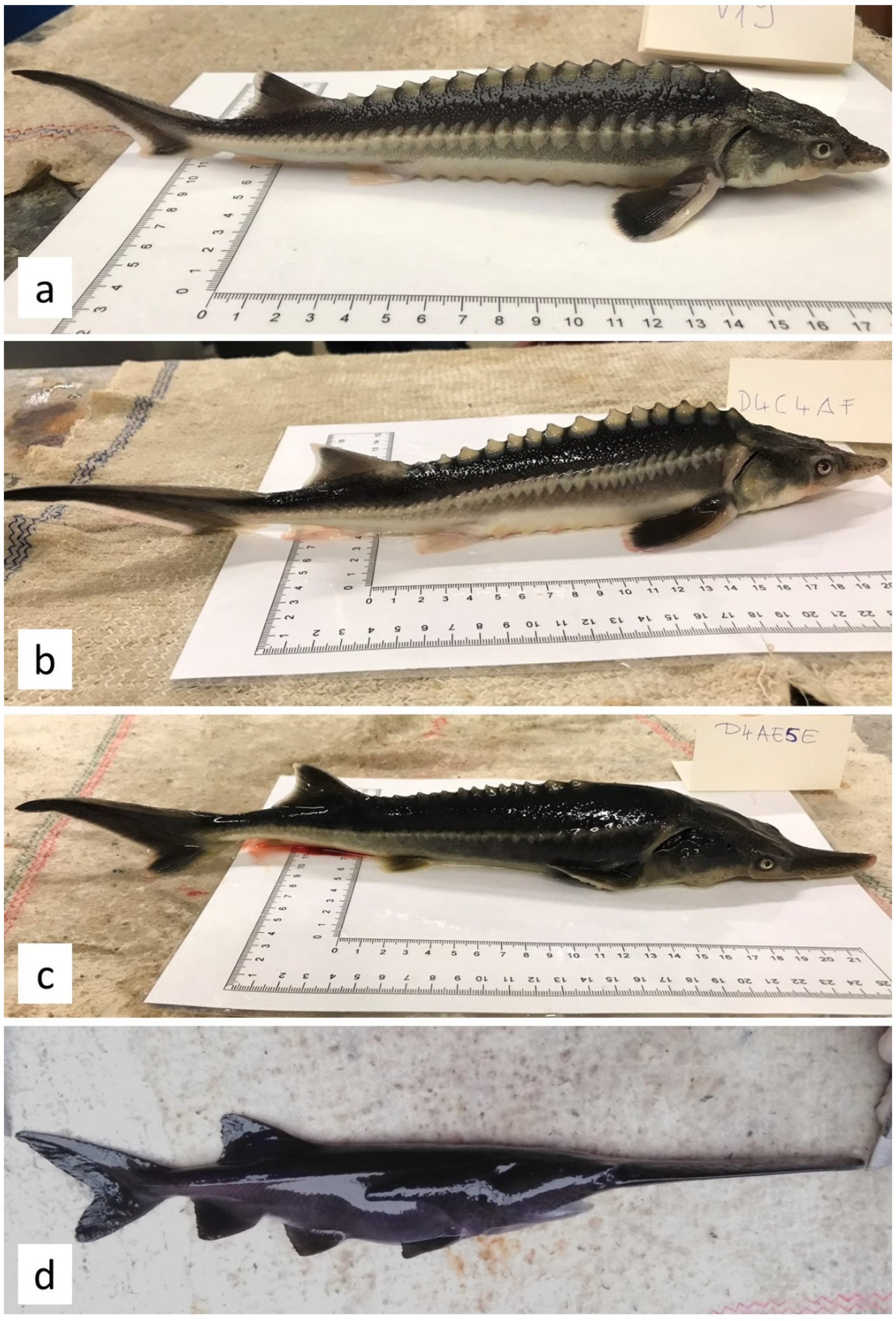Hungarian Scientists Unintentionally Create a New Hybrid Sturgeon Species - The 'Sturddlefish'

You may have already heard of hybrid sturgeon caviar, such as Beluga hybrid caviar made from a female Beluga (Huso Huso) crossed with another male sturgeon, usually of another quality caviar-producing species like Siberian or Sevruga. Caviar hybrids like these are created to make caviar very similar to the pure mother species while helping to keep up the pure populations in the wild.
Recently, a very unusual hybrid fish species has accidentally been created… The “Sturddlefish,” a crossbreed of the American Paddlefish (Polyodon spathula) and a Russian Sturgeon (Acipenser gueldenstaedtii, a.k.a. Osetra).
American Paddlefish - Polyodon Spathula
Russian Sturgeon - Acipenser Gueldenstaedtii
As reported in this month’s Genes, Hungarian scientists have unintentionally created this very interesting sturgeon hybrid through gynogenesis, a form of asexual production that requires there to be sperm present but not the actually contribute paternal DNA. The sperm from the paternal Paddlefish was intended to be a negative control in the experiment, simply to help fertilize the egg but not contribute DNA. Considering the two species have differing ploidy levels (number of chromosomes present in cells) and only shared a common ancestor over 184 million years ago the existence of this type of hybrid seemed almost completely unlikely.
Balázs Kovács, an aquaculture geneticist at Szent István University who worked on the study, said hybridization may have been possible thanks to the sturgeons' slow evolution. The two fish are considered "living fossils" or species that have remained almost completely unchanged over millions of years and have very few surviving close relatives.
"It's really hard to answer this question because these two species are evolutionarily far from each other," said Kovács."This is [a] very special hybrid."
The researchers said that they hope to conduct more genetic analysis on the fish to provide insight into their evolution and useful data for conservation genetics. They also plan to confirm whether or not the fish are sterile like other manmade hybrids.
Paddlefish are long-nosed, filter-feeding, and rather small compared to a Russian Sturgeon. These Sturddlefish offspring are interestingly showing different combinations of characteristics of both species. The majority more closely resemble their sturgeon mothers with the signature diamond pattern and shorter upturned snout, but some share these traits along with a smaller body and hybrid version of the elongated Paddlefish nose. See example photos below.

(a) Yearlings of A. gueldenstaedtii and (b) their hybrids: (c) typical (LH) large genome size hybrid, (d) typical (SH) small genome size hybrid of P. spathula.
“ Although hybridization among acipenserid species is common, there are no reports of successful hybridization of acipenserids and polyodontids. Previous hybridization experiments on shovelnose sturgeon (Scaphirhynchus platorynchus) × American paddlefish [12,13] or American paddlefish × Amur sturgeon (Acipenser schrenckii) [14] have failed to result in viable offspring.”
The fact that the Paddlefish DNA was able to cross with a Sturgeon and produce viable offspring is a scientific discovery worth talking about.
Read more about the specifics of this experiment in the Genes Scientific Journal.
KÁLDY ET AL., GENES 2020, 11(7), 753; HTTPS://DOI.ORG/10.3390/GENES11070753 (CC BY)



 (888) 268-8780
(888) 268-8780